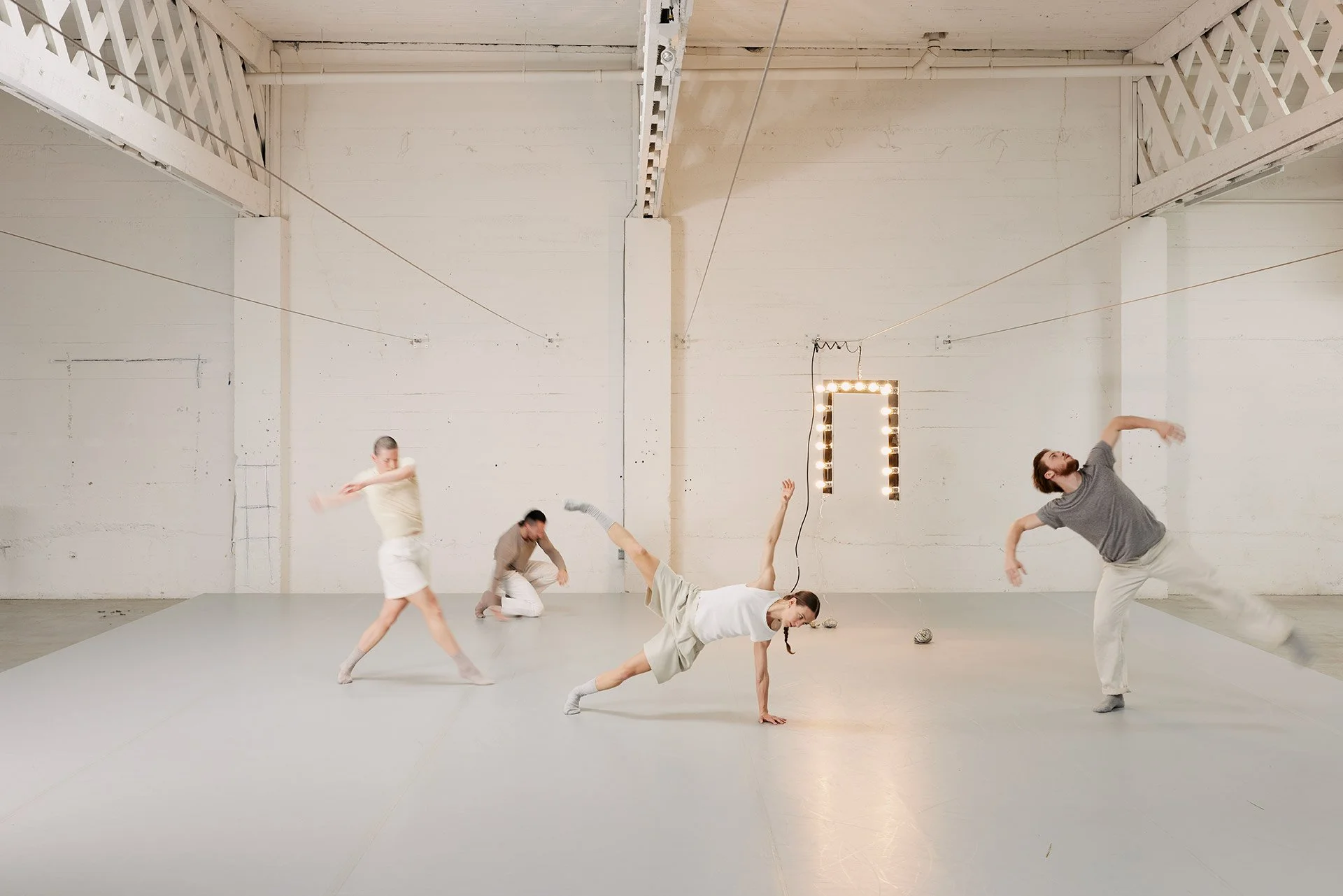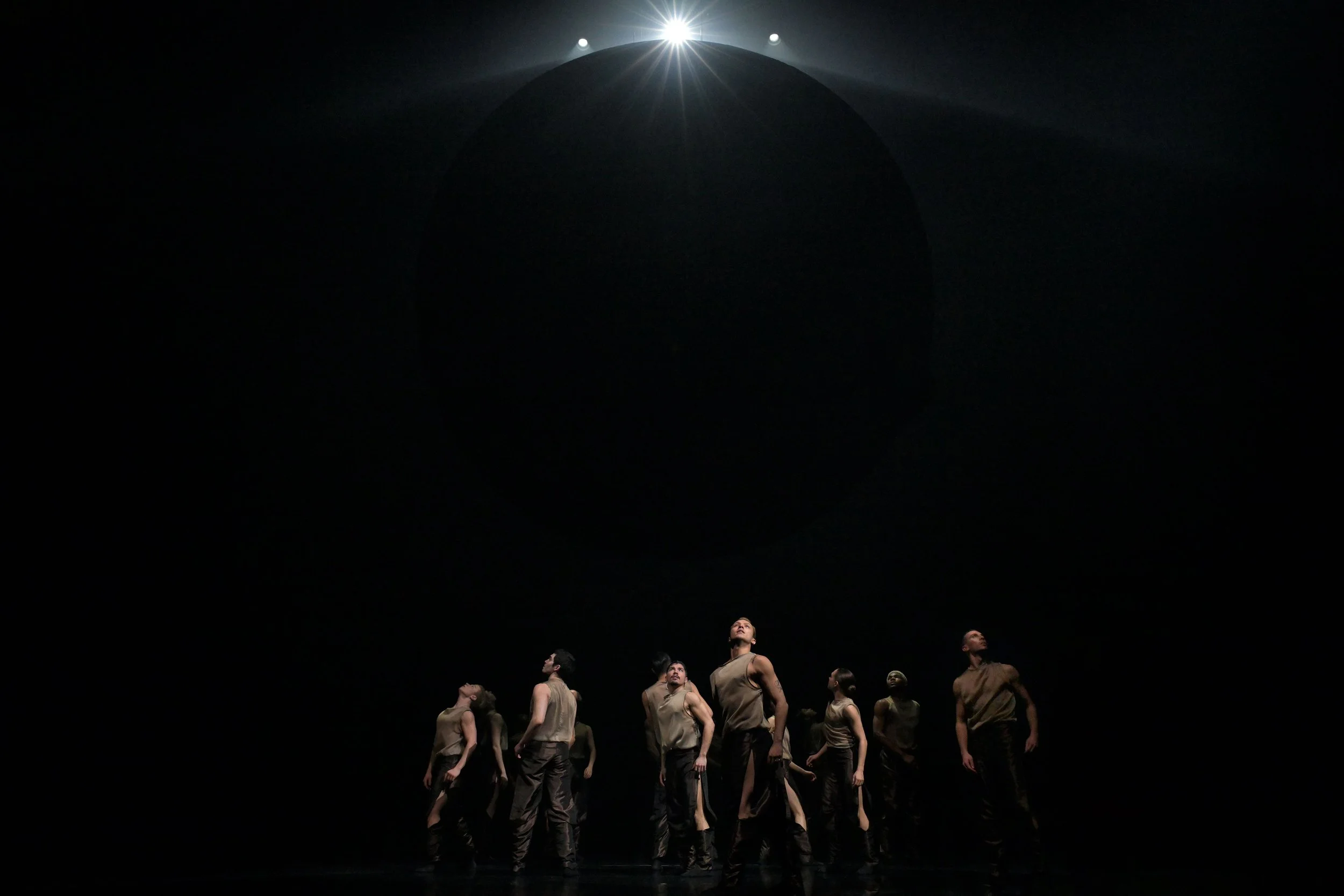Dance review: Rachel Meyer's Many Worlds conjures a dreamlike universe, and a social happening, in a Railtown warehouse
Microcosmos' String Quartet’s searching music and artist Rochelle Goldberg’s mesmerizing sets and costumes add to dance work’s ambiance
Photo by Fahim Kassam
Many Worlds continues at 298 Alexander Street to June 3
ONE OF MANY things that local choreographer Rachel Meyer does brilliantly is stage shows that feel like bona fide happenings—the kind that make you feel like you’re in Friedrichshain or Brooklyn instead of Vancouver’s Railtown.
And so it was that in-the-know audience members streamed into a white-walled and -beamed warehouse at Alexander and Gore to catch the former Ballet BC standout’s new Many Worlds, the crowd set on two risers set galley-style on either side of a raised floor. Four dancers in diaphanous nude bodysuits were already contorting around the space as the musicians of Vancouver’s Microcosmos String Quartet were warming up their strings.
Signs of the strange and extraordinary visual world that Vancouver-Berlin conceptual artist Rochelle Goldberg would be conjuring were immediately evident. Known for her unique juxtapositions of natural, found, and manufactured materials, she had strung wires with plugs above the stage. The space would gradually become an interactive installation all its own, big metal frames lined with lightbulbs, their bottoms anchored to the floor with rocks on wires. They moved and swayed along with the choreography, the dancers twisting the fixtures on and off, and tilting the frames to illuminate themselves and each other. The space was as fluid as the dance, shifting and ever under construction, with the performers moving around parts throughout.
Equally atmospheric was Vancouver composer James Maxwell’s score, played with finesse by Marc Destrubé, Francisco Barradas, Tawnya Popoff, and Jake Klinkenborg—no easy task. High twittering notes were set against ominous cello, enhanced with loopers and found sounds—a mix of the natural world and the electronic, the whole sound echoing the tensions between elements of the design. The yearning, otherworldly feel also added to the fever-dream quality of the entire evening.
Contributing to the delirium was the fact that Meyer, known for irreverent surreal touches in past immersive outings like Mama, do we die when we sleep? and the Transverse Orientation, upended linear time. She began the piece with group bows and then played the whole work backwards. (A long piece, Many Worlds is well worth sticking out to the clever “ending”—or beginning.)
An arresting quartet of dancers—Eowynn Enquist, Oksana Maslechko, Justin Rapaport, Calder White—committed to that surreal vibe in the choreography. Maslechko and Enquist rolled their heads dreamily over each other’s shoulders as they moved; Enquist used her legs to drag former Ballet BC dancer Rapaport by his arms across the floor. Twirls turned off axis, one leg trembling and spasming; a man bent his partner sideways over his back.
The big strength of Meyer’s work is the way it toys with separations between dancers, musicians, and audience, and between fiction and reality—divisions that melted and disappeared more and more frequently. The dancers picked up the musicians’ music stands and moved them ever closer to the choreographic action. One seat in the front row was taken as a rest spot for dancers and musicians who came and went; an usher suddenly became part of a split-second pas de deux. And at another point, we seemed to be a party to the group’s chatty intermission break.
So for all its high concept art, Many Worlds, like any good happening, was a lot of fun, too. It's a show of unfettered artistic vision—the kind that had passersby gawking through the warehouse windows into the bright lights. Catch it if you've forgotten what it feels like to be excited about art—and, even more so, going out.














